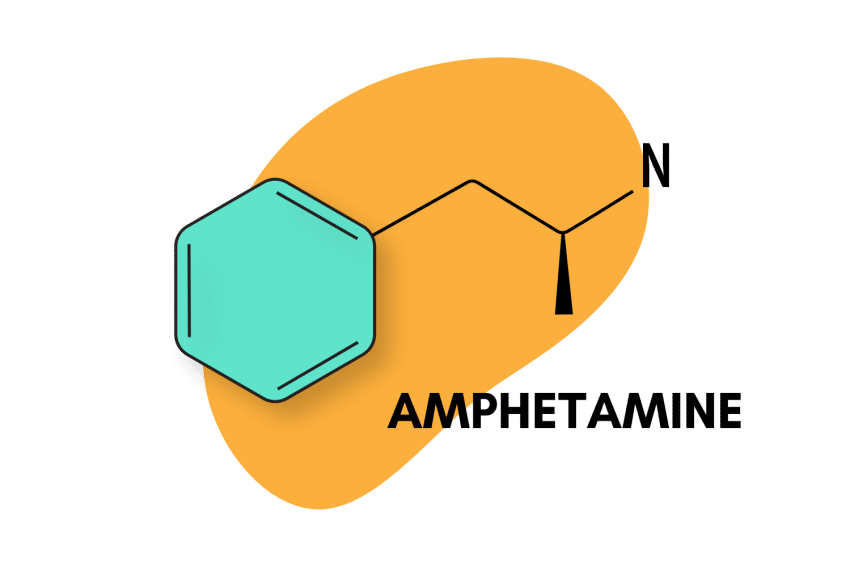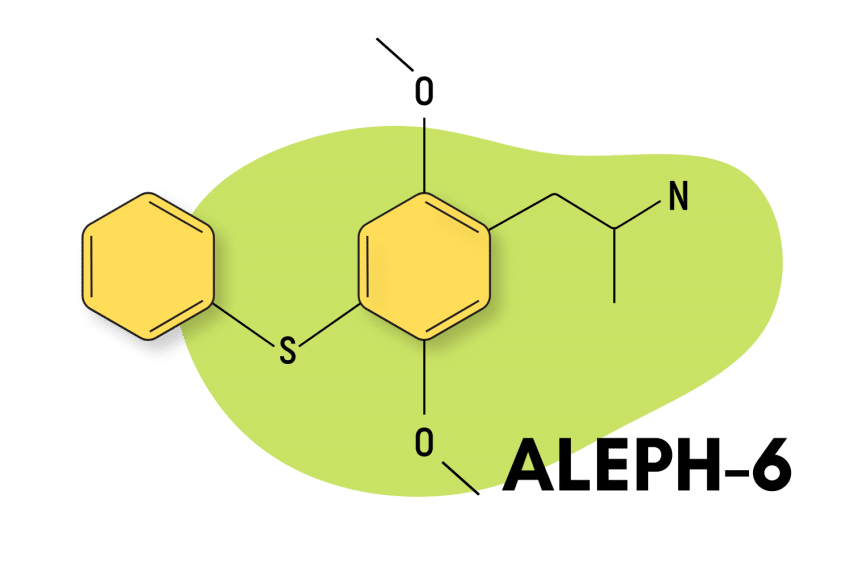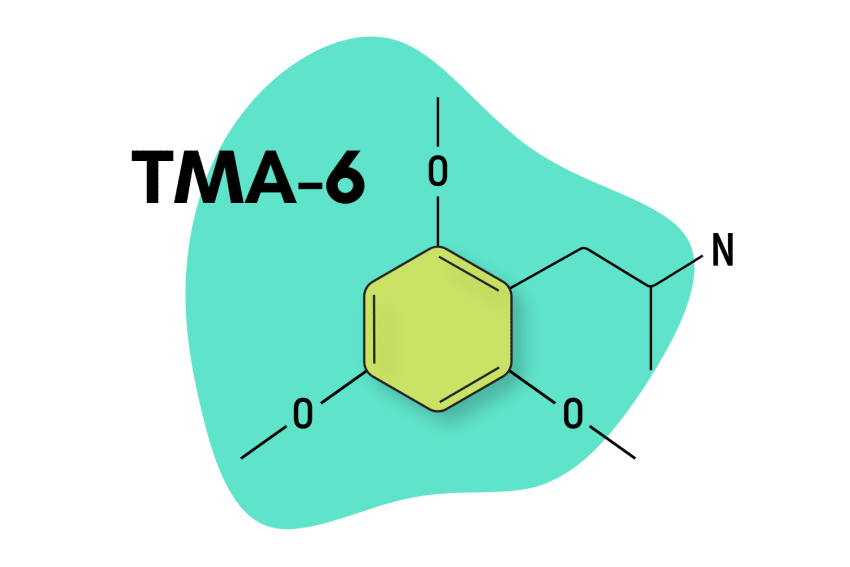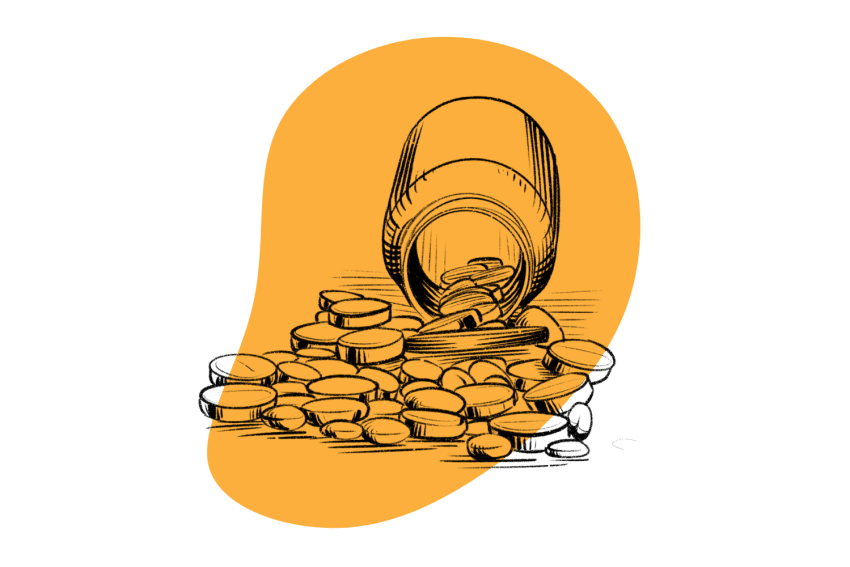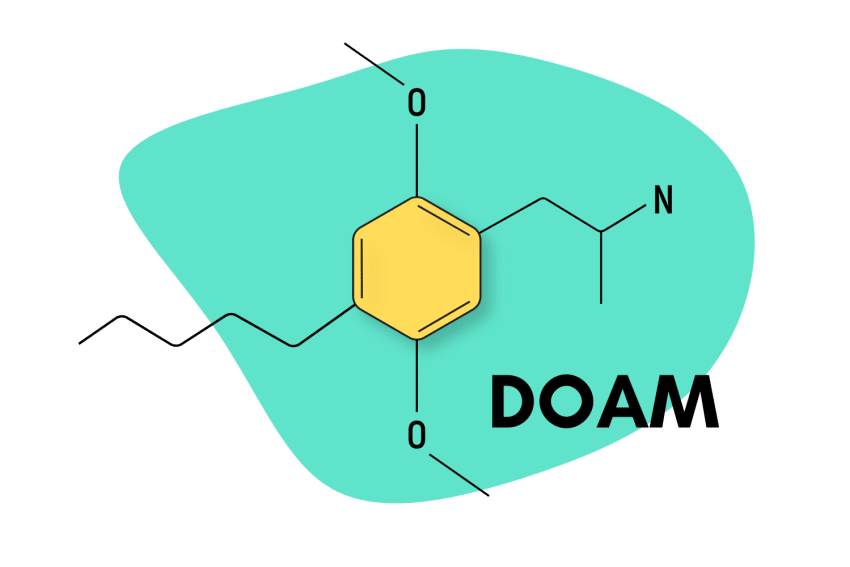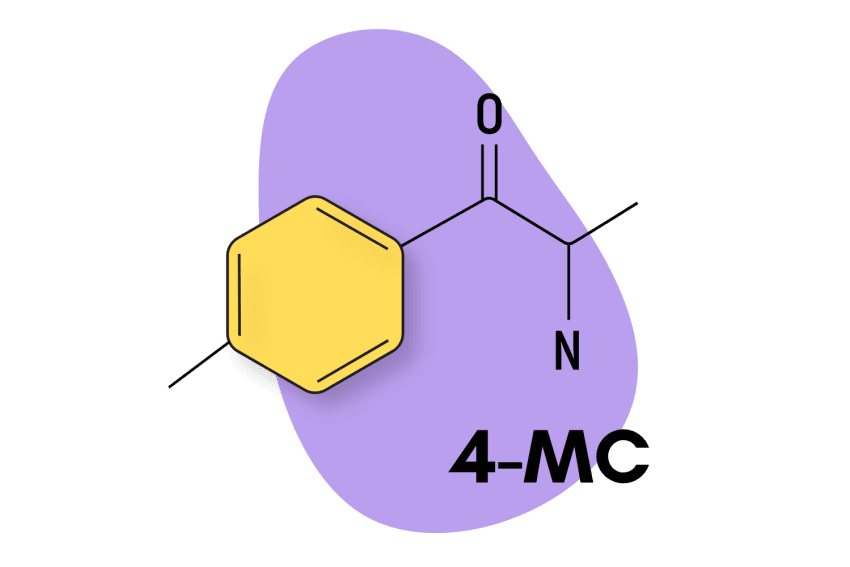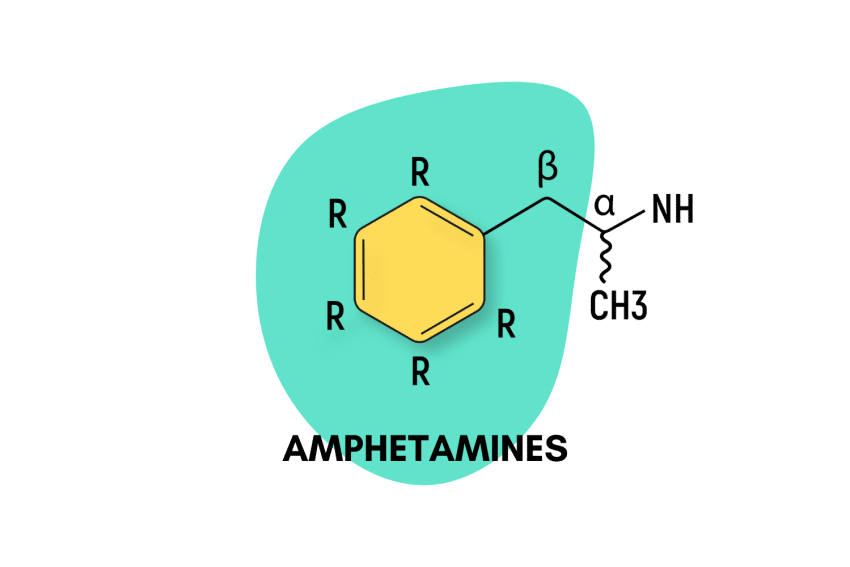3-FMA: The Newest Addition to the Fluorinated Amphetamine Family
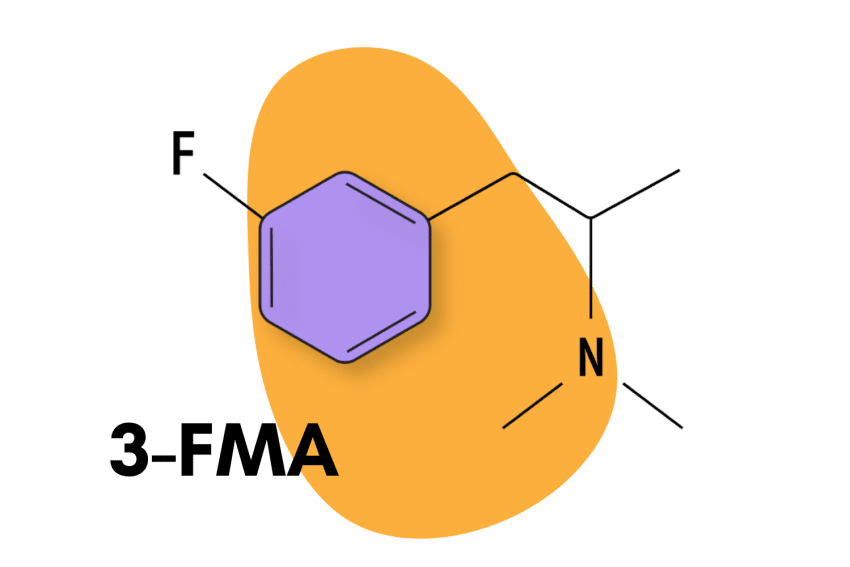
What is 3-FMA?
3-Fluoromethamphetamine or 3-FMA is a fluorinated amphetamine sold online as a designer drug. This compound has no approved medical uses.
Structurally, fluorinated amphetamines are defined by the presence of a fluoride group attached to the central ring moiety of the base amphetamine molecule.
Basic research is lacking on these compounds, but the little information we have suggests adding the fluoride group causes significant pharmacological diversity. The effects of different members of the fluorinated amphetamine family can vary substantially — but most are powerful psychoactive drugs.
Here’s everything you need to know about 3-FMA.
3-FMA Specs
| Chemical Name | 3-Fluoromethamphetamine |
| Level of Risk | Moderate |
| Other Names | 3-FMA |
| Most Common Side Effects | Overstimulation, Increased heart rate, Perspiration, Cognitive fatigue |
| Duration of Effects | Three to seven hours |
| Estimated Threshold Dose | 5 mg |
| Common Dose | 15 to 30 mg |
| Legality/Status | Research Chemical |
| PubChem ID: | 58216164 |
| CAS# | 1182818-14-9 |
Tripsitter Safe 3-FMA Guidelines
- 🐍 I understand why psychostimulants should be treated with respect
- ⚖️ I’m familiar with the laws for 3-FMA in my country & state
- 🍄 I’m familiar with and confident in the dose I’m taking
- 🧪 I’ve tested a sample of the substance I’m using with a drug-testing kit
- 💊 I’m not mixing any medications or other substances with 3-FMA
- 🏔 I’m in a safe & comfortable environment with people I trust
- 🐺 One of the members of my group is responsible and sober (AKA a trip sitter)
- ⏳ I have nothing important scheduled for after the trip
- 🧠 I’m in a sound & healthy state of mind
- ❤️ I don’t have any underlying health issues — don’t take 3-FMA if you have underlying heart, neurological, or psychiatric disorders
- 👭 Use the buddy system — 3-FMA can remove your inhibition and allow you to make unsafe decisions, always stay with people you trust, and never go out alone
- 🌵 I understand the risk of dehydration — it’s easy to become dehydrated on 3-FMA, so make sure you’re drinking a cup of water every hour while using molly
- 🦻 Protect your hearing — music can be intoxicating while on 3-FMA, so wear ear protection if you go out to a club or concert
What Are The Effects of 3-FMA?
Due to the lack of studies, the only available method to gauge the physical effects of 3-FMA is through the use of online forums where both recreational and relief-seeking users congregate to discuss the effects of a variety of designer drugs, euphemistically referred to as “research chemicals.”
This method is obviously lacking in scientific objectivity, but it has proven largely effective in laying out the broad differences between compounds as well as the general characteristics a user can expect when using a given amphetamine compound.
In the case of 3-FMA, online users have suggested this compound has a profile that lies somewhere between that of 4-FMA and 2-FMA, possessing both the functional, “study-drug” properties of 2-FMA and the euphoric properties of 4-FMA.
At lower doses, 3-FMA has been reported to lean towards functional and productive use, while as one increases the dose, the euphoria becomes more prevalent and distracting.
The following effects are associated with the use of 3-FMA:
Physical Effects
- Appetite suppression
- Dehydration
- Increased heart rate
- Increased perspiration
- Physical euphoria
- Stimulation
- Tactile enhancement
- Teeth grinding (less intense than MDMA or 2-FMA)
Cognitive Effects
- Analysis enhancement
- Anxiety suppression
- Compulsive redosing
- Cognitive euphoria
- Focus enhancement
- Increased music appreciation
- Motivation enhancement
- Thought acceleration
- Time distortion
- Wakefulness
After Effects
- Anxiety
- Cognitive fatigue
- Depression
- Irritability
- Motivation suppression
- Wakefulness
It’s important to understand that not every effect in the above list will necessarily materialize when using 3-FMA, nor will they occur predictably or reliably. The list is rather a spectrum of possible effects. The complete range — and that goes for adverse effects as well — only tends to appear when utilizing higher doses.
3-FMA Dosage
Online users tentatively suggest the dosing values for 3-FMA are as follows:
| Threshold | 5 mg |
| Light | 10 to 15 mg |
| Common | 15 to 30 mg |
| Strong | 30 to 60 mg |
How Does 3-FMA Work?
Currently, there are no peer-review studies on the pharmacology of 3-FMA, which means we’re forced to make educated assumptions based on what we know about substituted amphetamines.
As an amphetamine, it is likely that 3-FMA acts as a releasing agent for dopamine and norepinephrine. And based on its subjective effects, which emphasize empathogenic properties quite strongly, we can also assume that 3-FMA also has an affinity for the serotonin receptor.
In fact, 3-FMA seems to be one of the more empathogenic compounds in the fluorinated amphetamine class, so we can likely assume that it’s a serotonin-dominant compound, meaning its affinity for serotonin is stronger than for dopamine and norepinephrine. If in-depth information were available, we could know the relative affinity levels for each neurotransmitter. This does not always translate as expected when it comes to the amphetamine’s actual effects, but it’s usually quite revealing.
The mechanism of action utilized by 3-FMA is likely reuptake inhibition, the most common pathway utilized by substituted amphetamines.
Reuptake inhibition works by effectively inhibiting the process by which neurotransmitters are cleared from the synaptic cleft, the space between neurons, and transported back into the presynaptic neuron, where they can no longer bind to receptors and exert their effects on the central nervous system.
By inhibiting this process, reuptake inhibitors lead to higher levels of active neurotransmitters in the brain, translating into more potent pharmacological action associated with said transmitters. It’s important to note that reuptake inhibition is usually accompanied by a secondary mechanism where amphetamines can stimulate neurotransmitters’ release from the presynaptic neuron and into the synaptic cleft.
Pharmacokinetics of 3-FMA
Pharmacokinetic (PK) data for 3-FMA is also sourced from user self-assessment reports. According to online users, 3-FMA takes 20 minutes to kick in, lasts for approximately four to eight hours, and has about one to possibly 12 hours of after-effects.
PK data on amphetamine compounds that have received more research attention suggests that amphetamine all have relatively rapid values (i.e., their effects go away quickly). This often leads to the utilization of multiple methods of administration (like snorting, bombing, and oral ingestion) in order to maximize both the short- and long-term effects of a drug.
Is 3-FMA Addictive?
Yes. The ability of amphetamine compounds to cause both physical and psychological dependence due to heavy use has been proven by both rat and human studies. However, it’s important to put these findings into context given the wide spectrum of pharmacological drugs that also have the potential for abuse.
Amphetamine dependence, for example, is not as capable of producing signs of intense physical dependence as depressant compounds like benzodiazepines or opiates. As such, withdrawal symptoms seem to be more associated with severe depression and relapses in psychiatric disorders. This doesn’t mean amphetamines can’t produce some measure of physical dependence, but in this regard, they aren’t as addictive as other, more popular drug types [1].
Amphetamine addiction is not entirely understood, but studies suggest that the mediation of dopamine and norepinephrine neurotransmitters and the subsequent impact on the brain’s reward circuitry play a large role. These findings, along with rat self-administration studies, suggest that addiction to amphetamines is largely a behavioral/psychological issue.
Is 3-FMA Safe? Risks & Side Effects
There are definitely some significant risks associated with psychostimulant use that users must be aware of.
The most risk-prone behavior associated with psychostimulant use relates to recreational use, usually in the context of a music festival, rave, nightclub, or some other event of that nature. Polydrug abuse is frequent in these events, as well as compulsive re-dosing — two behaviors that significantly increase user risk.
In general, the most significant dangers associated with amphetamine use are cardiovascular in nature.
Heavy use of compounds like MDMA and methamphetamine has been shown to be cardiotoxic over the long term. Many of the adverse effects caused by these compounds (hyperthermia, increased heart rate, palpitations, etc.) can put users at increased risk of cardiac arrest and other cardiac events.
Heavy amphetamine use is also associated with the risk of psychosis and symptoms such as paranoia, hallucinations, and delusions. In some cases, cessation of amphetamine use may bring on a heavy psychotic episode.
Lastly, certain amphetamines have also been shown to have after-effects that can negatively affect cognitive performance for well over two weeks. These effects are more associated with serotonergic compounds like 3-FMA and MDMA.
Harm Reduction: 3-FMA
As the global conversation over drug use has matured, the general public has begun to understand that consenting adults can engage in recreational drug use without necessarily becoming addicted and causing undue harm to their health and social relationships. In this evolving context, the importance of harm reduction principles, where the goal is not the cessation of all drug use but rather the minimization of drug-related risks, has become increasingly important.
Harm-reduction principles have proven efficacy in helping reduce drug-related deaths; thus, all recreational drug users must become familiar with them.
Here are some simple but effective harm-reduction tactics you can apply to any drug:
1. Always Test Unregulated Drugs
Recreational drugs procured on designer drug websites or the streets always carry the risk of adulteration. When dealing with certain drugs like cocaine, it’s almost impossible to acquire a 100% pure dose. In recent years, with the introduction of hazardous compounds like fentanyl, the risks presented by adulteration have become even more prevalent.
This is why it’s so crucial to buy a reagent test kit to test the drugs and rule out the worst possible adulterants. Reagent test kits are quite affordable, costing around $40 and providing sufficient materials for hundreds of tests. If you’re unsure about how to use these test kits, check out our in-depth explanation.
2. Stay Hydrated
In the context of raves and music festivals, finding water is often a lot harder than it should be. Alcohol is likely easier to acquire, which makes the problem of dehydration even worse. A lot of the adverse effects of stimulants, like hyperthermia and increased heart rate, can worsen and even lead to a serious health event if compounded with dehydration. When using recreational compounds, especially stimulants, make sure you have access to water.
3. Avoid Polydrug Use
Mixing potent drugs is never a good idea. Drug interactions come in all different forms and are usually quite complex, but they will always result in elevated risk levels. In fact, most recorded drug fatalities show the presence of more than one compound. One especially deadly combination is the concomitant use of depressive compounds like opioids, barbiturates, and benzodiazepines.
3-FMA Drug Interactions
Watch out for these drug combinations when using amphetamines:
Alcohol & Other Depressants
Alcohol can offset the stimulant effects of amphetamines and, in this way, often leads to more compulsive amphetamine consumption. The reverse effect is also true. However, stimulant effects tend to fade faster than depressive effects.
This means that excessive depressant use while under stimulants can become very dangerous once the stimulant effects fade. The resulting depressive effects could overwhelm the user and lead to acute intoxication.
Cocaine & Other Stimulants
There is little point in combining stimulant compounds. Concomitant stimulant use will raise the chance of adverse effects and other, more serious events like cardiac arrest.
Tramadol
Tramadol and stimulants both increase the risk of seizures.
DXM
Both DXM and stimulants raise the heart rate, and, in extreme cases, panic attacks caused by these substances have led to more serious heart issues.
When to Avoid 3-FMA
All research chemicals carry some inherent risk, but there are certain situations where it’s imperative to avoid a specific drug — these are referred to in the medical community as “contraindications.”
Contraindications of 3-FMA include:
- Advanced arteriosclerosis
- Cardiovascular disease
- Glaucoma
- History of drug abuse
- Hyperthyroidism
- Known hypersensitivity or idiosyncrasy to sympathomimetic amines
- Moderate to severe hypertension
- Pregnancy and lactation
- Use of monoamine oxidase inhibitors
- Use of other central nervous system stimulants
3-FMA: Final Thoughts
The consensus around 3-FMA seems to be that it’s a sort of hybrid between 2-FMA and 4-FMA.
4-FMA is a heavy empathogenic compound used almost exclusively as a recreational drug, while 2-FMA is a heavy stimulant compound utilized mostly as a study drug. Between the stimulant and empathogenic properties, it appears that 3-FMA leans strongly toward the empathogenic side. 3-FMA can probably be thought of as the second most empathogenic fluorinated amphetamine after 4-FMA.
Unless small doses are used, the euphoric and empathogenic qualities of 3-FMA are likely not conducive to tasks that require high productivity. However, the “functional” side to 3-FMA might make it well suited to more artistic/creative endeavors. In any case, 3-FMA, like other heavy empathogenic compounds, is mainly tied to recreational use.
3-FMA: FAQs
When did 3-FMA enter the market?
3-FMA first became available on designer drug websites around mid-2017.
What effects does the substitution of the fluoride group have on amphetamines?
The pharmacological effects of fluoride substitution have proven to be diverse and poorly understood. However, in terms of pharmacokinetics, fluorine substitution is sometimes seen as desirable in central nervous system agents because of its ability to increase lipophilicity and thus improve bioavailability, making the compound relatively stronger.
References
- Heal, D. J., Smith, S. L., Gosden, J., & Nutt, D. J. (2013). Amphetamine, past and present–a pharmacological and clinical perspective. Journal of psychopharmacology, 27(6), 479-496.

